Mind-To-Hand Flow by Dan Perjovschi
Drawing could be an uncurbed instinct. For Dan Perjovschi (b. 1961, Romania), grown up in the paranoid/nationalistic vision of art imposed by the Romanian communist regime, drawing represents the most effective and direct way to express himself freely. Soon after the fall of Ceausescu’s autocracy, in the early 90’s, Perjovschi started his collaboration as illustrator with an independent, socio/political weekly magazine named Revista 22 – where 22 stands for 22nd December 1989, the day of the regime fall –, which first gave him the opportunity to let his creative and critical process flows. Through simple, childlike, “cartoonish” images, speech bubbles, and wordplays, Perjovschi communicates his unique analysis of the present social issues, mixing up frivolity and sharpness, irony and seriousness.
Moving from paper to wall as different supports for his works, the artist exploits the directness of the graffito and its performative nature combining them with the meditation of a previous observation: going around to collect ideas, equipped only with sketchbooks and marker pens, he takes notes of the surrounding world and translates his thoughts about the intricate situations of everyday life. Doing this, he creates works that can be called literary graffiti, which are little poems or conceptual statements made not only for the sake of leaving a mark, but also for making you think.
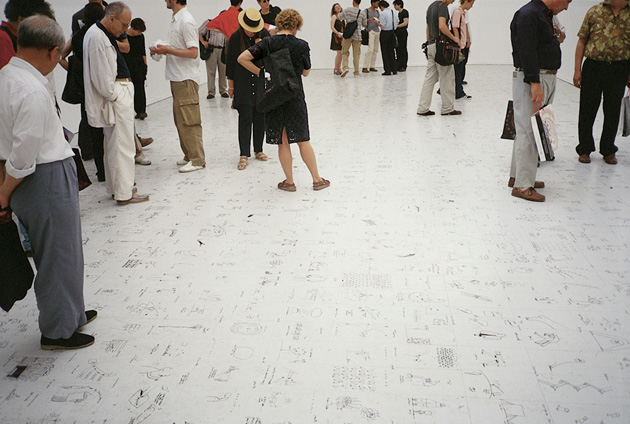
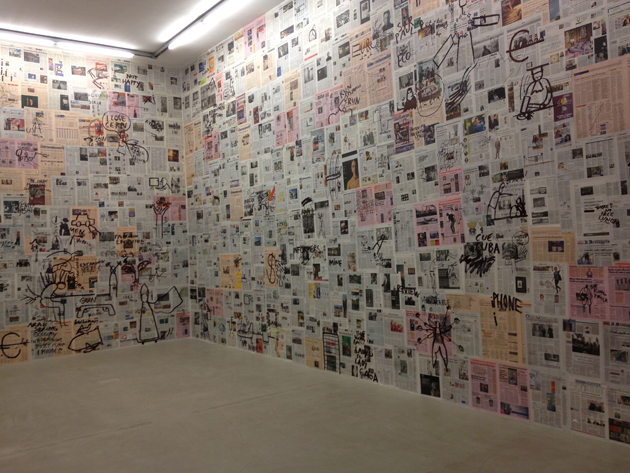
When entering the solo show by Dan Perjovschi entitled Good news, bad news, no news at Kaufmann Repetto in Milano, the impact is certainly strong. All the walls of the gallery are covered with Italian and international newspapers, reporting news about politics, economy, culture, but also rumours and plain gossip overlapped by the artist’s sketches and writings: a Don Quixote on his horse saying “I’m back!”, the texts “Nobody reads yesterday’s newspapers”, “Tragedies have no nationality” on the beige pages of the Guardian and the Observer, or the orange ones of the Financial times and Il Sole 24 Ore, along with the funny sentence “Men love Pink” on the unmistakable pink pages of the Italian sport newspaper La Gazzetta dello Sport, just to mention a few.
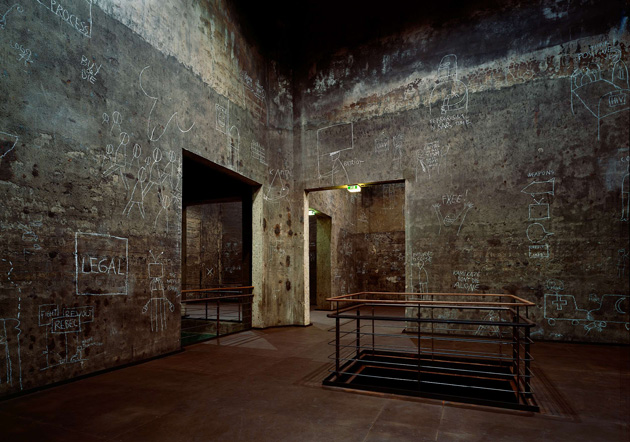
Through these huge site-specific installations Perjovschi made a portrait of our society in all its complexity. But the visit is not finished yet. A marvellous music comes from downstairs becoming – maybe accidentally – part of the main show. It comes from the project room and tickles your fancy; it is the last movement of the 9th symphony by Beethoven Ode an die Freude (Ode to Joy), which was adapted for use as the European Anthem and gives the title to the show. Going down the stairs, you see a sort of goal posts where the young artist Fausto Falchi (b.1982, Naples) hung the European flag just over an experimental Ruben’s tube that causes the changing of the flame according to the melody. The atmosphere of the room is warm and touching even if the scene is dramatic and full of meaning. Even though the flag – and everything it represents – is hardwearing, it is constantly in jeopardy because of the fire, which puts it in a dangerous and unstable position. As never before, it is so easy for us to feel this heat.
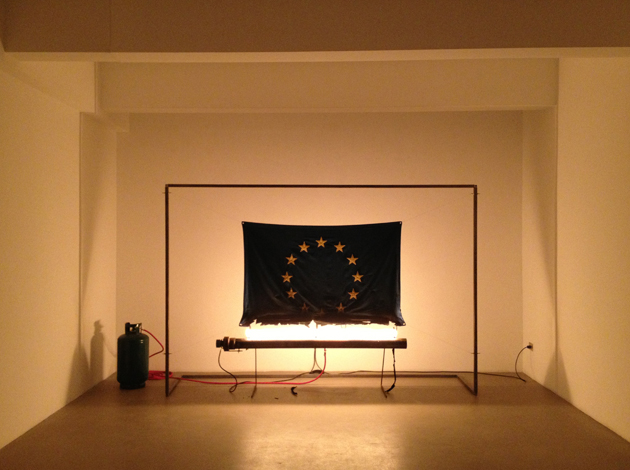
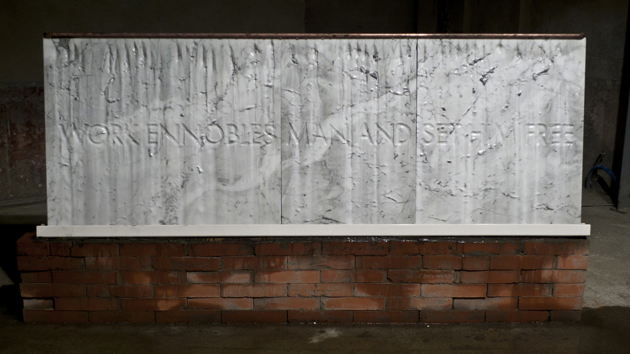
Good news, bad news, no news by Dan Perjovschi and Ode an die Freude by Fausto Falchi will run until November 2012.
Monica Lombardi – Many thanks to Kaufmann Repetto gallery staff.
